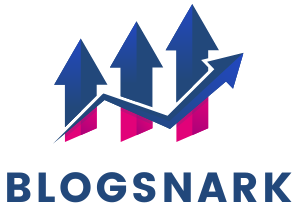Now ChatGPT defining Rules for DSL. DSL stands for Domain-Specific Language. It is a programming language that is designed for a specific domain or problem space, as opposed to a general-purpose programming language that can be used for a wide range of applications. DSLs can help to simplify complex problems by providing a concise and expressive way to describe a particular domain.
Rules play a critical role in DSLs as they define the syntax, semantics, and pragmatics of the language. The rules in DSLs ensure that the language is consistent, easy to understand, and can be used effectively to solve problems within the specific domain. Without rules, DSLs would be prone to errors, misunderstandings, and could lead to inefficient or incorrect solutions to problems. Therefore, it is essential to define clear and effective rules for DSLs to ensure that they are useful and practical tools for solving problems within a particular domain.
How ChatGPT defining rules for DSL?

ChatGPT is an AI-powered chatbot that has been trained on vast amounts of data to generate human-like responses. One of the tasks that ChatGPT is capable of is defining rules for Domain-Specific Languages (DSLs). With its advanced natural language processing capabilities, ChatGPT can analyze the requirements of the domain and generate rules that accurately define the syntax, semantics, and pragmatics of the language. In this way, ChatGPT can assist in the design of DSLs, making the process more efficient and effective.
Advantages of ChatGPT defining rules for DSL
One of the main advantages of using ChatGPT to define rules for DSLs is its ability to generate rules quickly and accurately. ChatGPT can analyze large amounts of data and generate rules that are consistent and conform to best practices. This can save time and effort in the design process, allowing designers to focus on other aspects of the language. Sometime chatgpt shows some error. To resolve this read ChatGPT newtwork error and its solution.
Another advantage of ChatGPT defining rules for DSL are their flexibility. ChatGPT can be trained on data from a variety of domains, allowing it to generate rules for a wide range of DSLs. This can be particularly useful in rapidly evolving fields where new domains and requirements are emerging all the time. You can also write resume with chatgpt.
Defining DSL
Domain-Specific Language (DSL) is a programming language that is designed to address specific problems within a particular domain. Unlike general-purpose programming languages, DSLs are designed to be concise, expressive, and easy to use for the specific domain they are intended to serve. DSLs can be implemented using a wide range of techniques, including traditional compiler-based approaches, interpreter-based approaches, or even template-based code generation.
Types of DSLs as per ChatGPT defining rules for DSL
There are two main types of DSLs: external DSLs and internal DSLs.
External DSLs
External DSLs are standalone languages that are designed specifically for a particular domain. They are typically implemented using traditional compiler-based approaches, and the resulting code is compiled into executable code that can be run on a computer. Examples of external DSLs include SQL, HTML, and regular expressions.
Advantages of External DSLs:
- They provide a high degree of control over the language’s syntax, semantics, and pragmatics.
- They can be optimized for performance and can leverage existing compiler infrastructure.
Disadvantages of External DSLs:
- They require a separate development effort and tooling to create and maintain.
- They may require more effort to learn than internal DSLs.
- Internal DSLs
Internal DSL
Internal DSLs are embedded within a general-purpose programming language and use the host language’s syntax and semantics. They are often implemented using a library or a set of domain-specific functions. Internal DSLs can be created using a wide range of programming languages, including Ruby, Python, and Scala.
Advantages of Internal DSLs:
- They are typically easier to learn than external DSLs since they leverage the syntax and semantics of a familiar programming language.
- They can be integrated into existing codebases and development workflows more easily.
Disadvantages of Internal DSLs:
- They may be more limited in terms of syntax and semantics than external DSLs.
- They may not provide the same level of performance as external DSLs.
Importance of rules in DSL
Rules play a critical role in the design and implementation of Domain-Specific Languages (DSLs). They define the syntax, semantics, and pragmatics of the language, which is essential for ensuring that the language is consistent, easy to understand, and can be used effectively within the specific domain.
Why rules are necessary in DSL
Rules are necessary in DSLs for several reasons:
- To ensure consistency: Rules help to ensure that the language is consistent and follows a well-defined set of guidelines. Consistency is crucial for making the language easy to learn, understand, and use effectively.
- To prevent errors: Rules can help prevent errors by defining how the language should be used and what types of input it can accept. Without rules, users may make mistakes or use the language in unintended ways, leading to errors and incorrect results.
- To enable reuse: Rules can help to enable reuse of the language within a particular domain. By providing clear guidelines and rules for how the language should be used, it becomes easier for developers to create new applications or solutions that leverage the language’s existing functionality.
- Examples of the consequences of not having rules in DSL
ChatGPT defining rules for DSL very clearly. If DSLs are not designed with clear and effective rules, several consequences can arise, including:
- Ambiguity: Without clear rules, the language may be ambiguous or difficult to understand, leading to confusion and misunderstandings.
- Inconsistency: A lack of rules can lead to inconsistency in how the language is used, making it difficult for users to learn and use effectively.
- Error-proneness: Without rules to prevent errors, users may make mistakes or use the language in unintended ways, leading to errors and incorrect results.
- Reduced usability: A lack of clear rules can reduce the usability of the language, making it less useful within the specific domain it was designed for.
Overall, the importance of rules in DSLs cannot be overstated. Clear and effective rules are essential for ensuring that the language is consistent, easy to learn and use, and can be applied effectively within a particular domain.
Types of rules in DSL
There are three main types of rules in Domain-Specific Languages (DSLs): syntax rules, semantic rules, and pragmatic rules.
Syntax rules
Definition of syntax rules
Syntax rules define the formal structure of the language, including the allowable symbols, keywords, and expressions. Syntax rules ensure that the language is unambiguous and can be parsed by a compiler or interpreter.
Importance of syntax rules
Syntax rules are critical for ensuring that the language is consistent, easy to understand, and can be used effectively within a particular domain. By defining the formal structure of the language, syntax rules help to prevent ambiguity, errors, and misunderstandings.
Examples of syntax rules in DSLs include:
- The use of brackets and parentheses to group expressions
- The order of operations for mathematical expressions
- The use of keywords and symbols to define functions and variables
- The use of indentation and whitespace to define blocks of code
- The placement of semicolons to separate statements
Overall, syntax rules are an essential component of DSLs. They help to ensure that the language is consistent, easy to learn and use, and can be applied effectively within a particular domain.
Semantic rules
Definition of semantic rules
Semantic rules define the meaning of the language’s constructs, including variables, functions, and statements. Semantic rules ensure that the language behaves as expected and produces correct results.
Importance of semantic rules
Semantic rules are critical for ensuring that the language behaves correctly and produces the desired results. By defining the meaning of the language’s constructs, semantic rules help to prevent errors, inconsistencies, and incorrect results.
Examples of semantic rules in DSLs include:
- The types of values that variables can hold
- The parameters that functions can accept
- The operations that can be performed on different types of data
- The conditions under which statements are executed
- The order of execution for statements and expressions
Overall, semantic rules are an essential component of DSLs. They help to ensure that the language behaves correctly and produces the desired results.
Pragmatic rules
Definition of pragmatic rules
Pragmatic rules define the appropriate use of the language within a particular domain, including the style, conventions, and best practices. Pragmatic rules ensure that the language is used effectively and efficiently to solve problems within the specific domain.
Importance of pragmatic rules
Pragmatic rules are critical for ensuring that the language is used effectively and efficiently within a particular domain. By defining the appropriate use of the language, pragmatic rules help to ensure that the language is applied correctly and consistently, leading to better solutions and increased productivity.
Examples of pragmatic rules in DSL
- Naming conventions for variables and functions
- The use of comments and documentation
- Code formatting guidelines
- Best practices for error handling and exception handling
- Guidelines for optimizing performance
Overall, pragmatic rules are an essential component of DSLs. They help to ensure that the language is used effectively and efficiently within a particular domain, leading to better solutions and increased productivity.
Best practices for defining rules in DSL
When defining rules in Domain-Specific Languages (DSLs), there are several best practices to consider to ensure that the rules are effective and useful. These best practices include:
Keeping rules simple and concise
Rules in DSLs should be simple and concise to ensure that they are easy to understand and apply. Complex rules can lead to confusion and errors, and can make it difficult for users to learn and use the language effectively.
Making rules easy to understand and follow
Rules in DSLs should be easy to understand and follow, even for users who are not experts in the domain. Clear and simple explanations of rules can help to reduce confusion and errors and can make it easier for users to learn and use the language effectively.
Ensuring consistency across rules
Rules in DSLs should be consistent across the language to ensure that the language is easy to use and understand. Inconsistencies in rules can lead to confusion and errors and can make it difficult for users to learn and use the language effectively.
Providing clear explanations and examples of rules
Rules in DSLs should be accompanied by clear explanations and examples to ensure that users understand how to apply the rules correctly. Examples can help to illustrate the use of rules in practice and can make it easier for users to learn and use the language effectively.
How ChatGPT was created to define rules for DSLs
ChatGPT is an AI-powered chatbot that has been trained on vast amounts of data to generate human-like responses. One of the tasks that ChatGPT is capable of is defining rules for Domain-Specific Languages (DSLs).
Training ChatGPT:
ChatGPT was created using advanced machine learning techniques that enable it to learn from vast amounts of data and generate human-like responses. The process of creating ChatGPT involved training it on a massive dataset of text from the internet, including books, articles, and websites. This training dataset was used to train a neural network model, which was then fine-tuned to improve its performance on a range of language tasks.
Defining rules for DSLs:
To enable ChatGPT to define rules for DSLs, it was further trained on a specific set of data related to the domain in question. This training data allowed ChatGPT to learn the syntax, semantics, and pragmatics of the domain and generate rules that accurately defined the language. The process of training ChatGPT to define rules for DSLs is a complex one that involves a combination of machine learning algorithms and human expertise.
Collaboration with human designers: Human designers play a crucial role in providing the training data, defining the requirements of the domain, and evaluating the quality of the generated rules. Through this collaborative process, ChatGPT can learn to generate rules that accurately define the language, making it an intelligent tool for DSL design.
Importance of DSLs rules
The rules are a critical component of DSLs, and designers should take care to define them carefully and thoughtfully. chatgpt defining rules for dsl very well. By doing so, they can create languages that are powerful, effective, and easy to use, leading to better solutions and increased productivity in the target domain.
Conclusion of chatgpt defining rules for dsl
In conclusion, rules are an essential component of Domain-Specific Languages (DSLs). They define the syntax, semantics, and pragmatics of the language, ensuring that it behaves correctly and produces the desired results. Without rules, DSLs can be difficult to learn, understand, and use effectively, leading to errors, inconsistencies, and incorrect results.
To create effective rules in DSLs, it is important to follow best practices, such as keeping rules simple and concise, making them easy to understand and follow, ensuring consistency across rules, and providing clear explanations and examples. By following these best practices, DSL designers can create languages that are easier to learn, understand, and use, leading to better solutions and increased productivity.





One thought on “ChatGPT defining Rules for DSL”